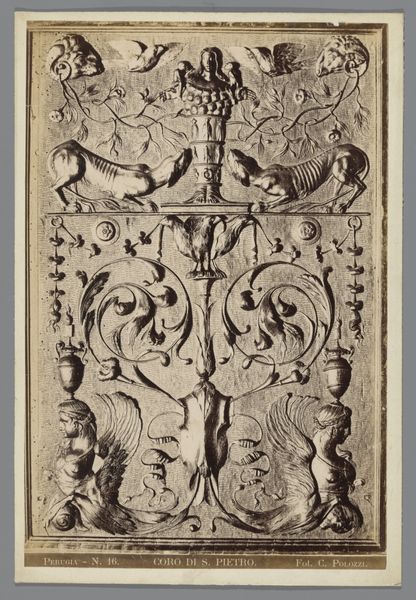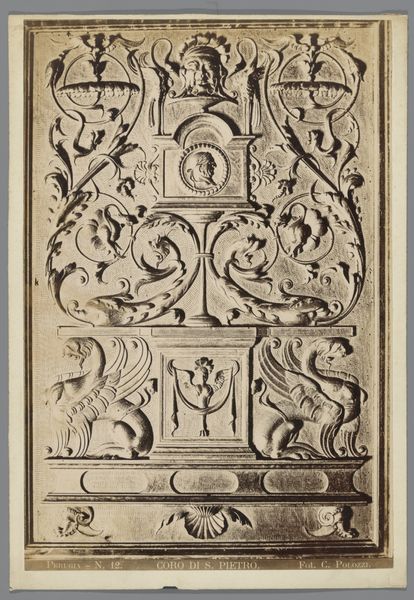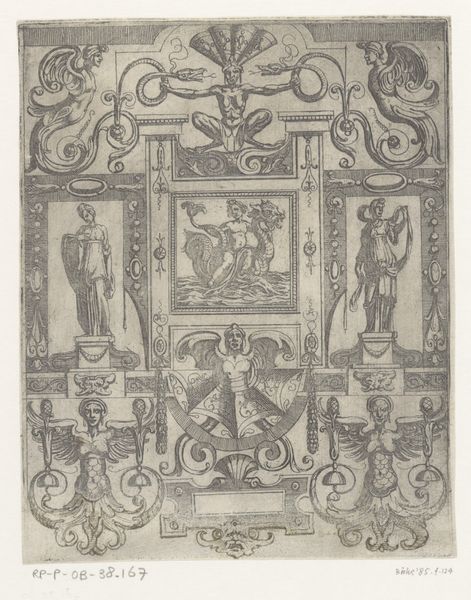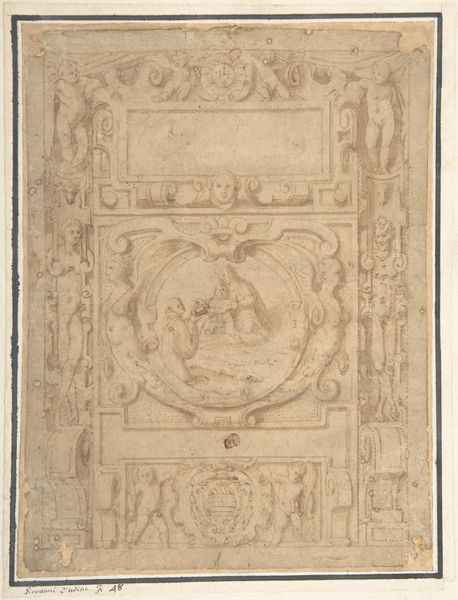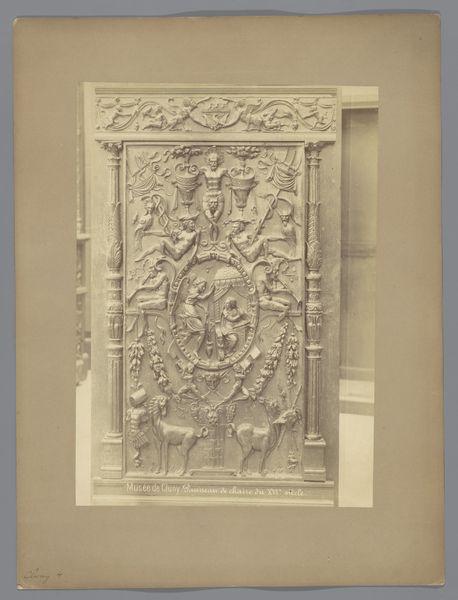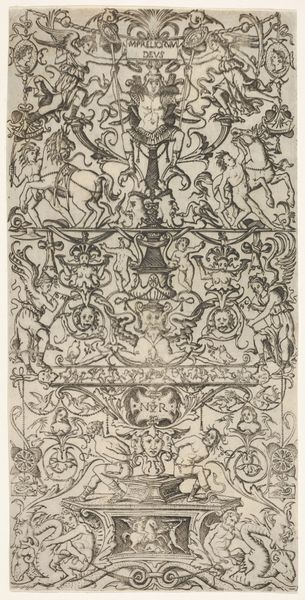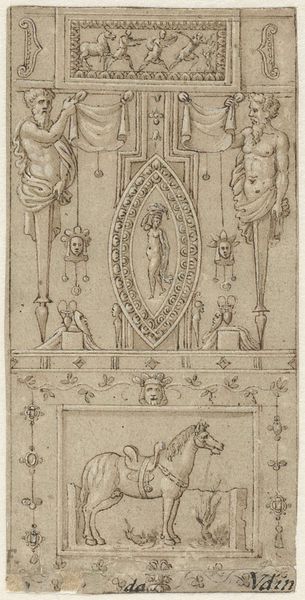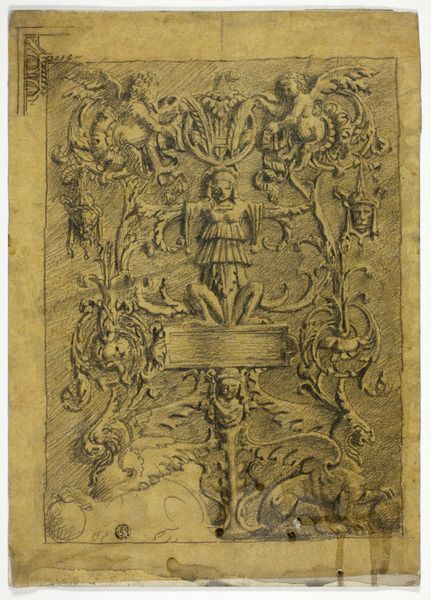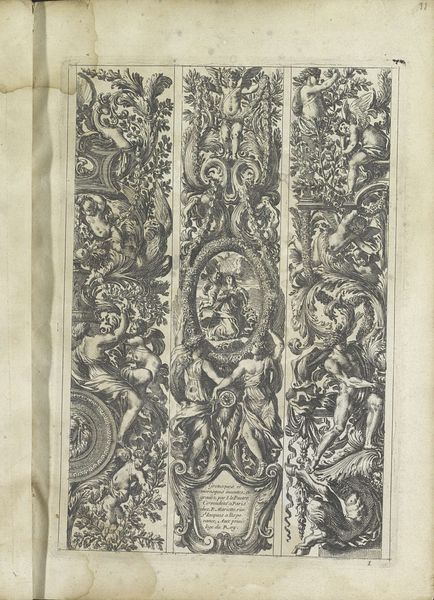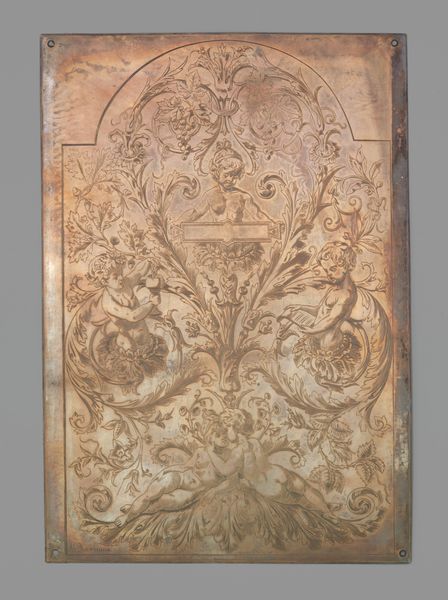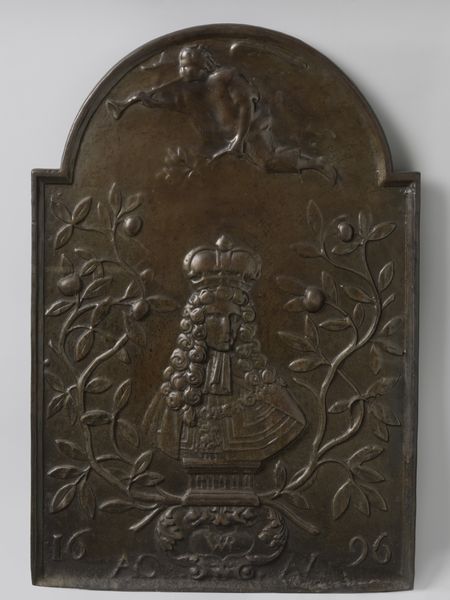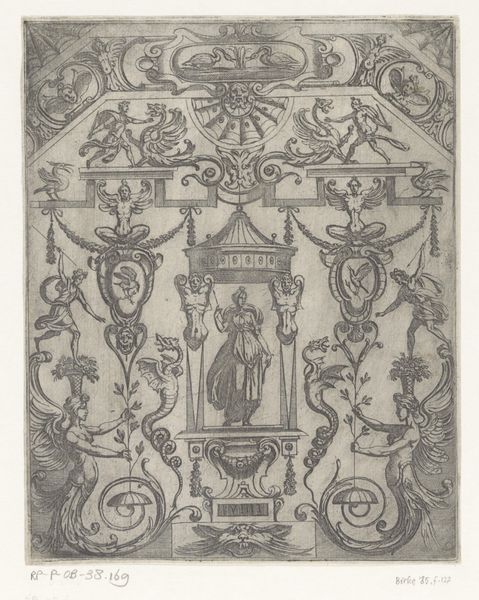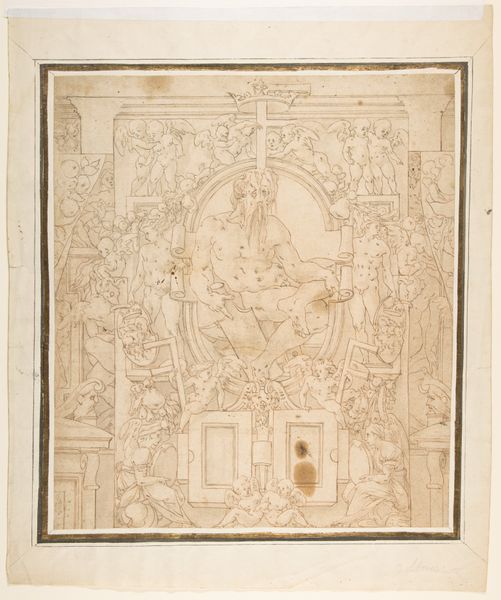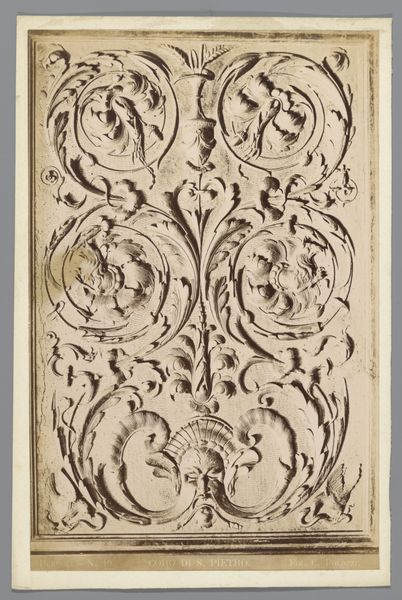
Escutcheon of Frans Banninck Cocq, Lord of Purmerland and Ilpendam c. 1650 - 1652
0:00
0:00
artusiquellinus
Rijksmuseum
relief, fresco, sculpture, wood
#
portrait
#
baroque
#
sculpture
#
relief
#
fresco
#
sculpture
#
wood
#
history-painting
#
academic-art
Dimensions: height 59.0 cm, width 22.5 cm, height 84.0 cm, width 45.0 cm, depth 9.5 cm
Copyright: Rijks Museum: Open Domain
This is the Escutcheon of Frans Banninck Cocq, Lord of Purmerland and Ilpendam, carved by Artus Quellinus in the 17th century. It's made of oak, a material commonly used for carving in the Netherlands at the time. The choice of oak is significant. It's a strong, durable wood, reflecting the enduring status and power of the person it represents. Quellinus skillfully used carving techniques to bring out the rich texture of the oak, and his mastery of relief is evident in the detailed rendering of the family crest. The process of carving itself is laborious. It requires patience, precision, and a deep understanding of the material. The amount of work involved speaks to the importance of heraldry and the social status it represents. The escutcheon isn't just a decorative object. It embodies the labor, politics, and consumption of its time. By considering the material and making of this artwork, we gain a fuller understanding of its meaning and significance, challenging traditional distinctions between fine art and craft.
Comments
rijksmuseum about 2 years ago
⋮
Quellinus took on private commissions from the Amsterdam mayors and their relatives, such as this design for the family coat of arms of Frans Banninck Cocq (1605–1655). He was Lord of Purmerend and Ilpendam and is chiefly known as the central figure in Rembrandt’s Nightwatch.
Join the conversation
Join millions of artists and users on Artera today and experience the ultimate creative platform.
